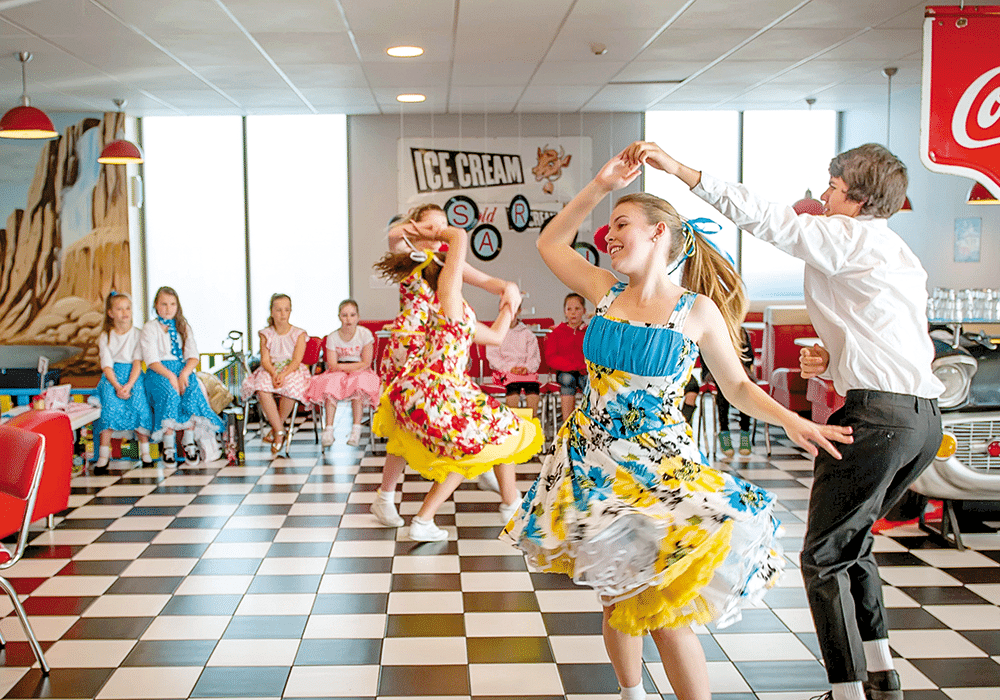A road trip takes a surprising turn as Eleanor Hughes finds three unique treasures.
An internet search on what to see in the Waikato brought up the obvious – Hobbiton, Waitomo, Hamilton Gardens and the Blue Springs. But it also unearthed three attractions I’d never heard of. We found the first in Hamilton.
Classics Museum
Just off SH1, with overnight parking for self-contained campervans and caravans, the Classics Museum is fun. Even if, like me, the only thing that interests you about a car is its colour, you’re sure to enjoy it!
Entrance is through the Jukebox Diner, a 1950s American-style cafe with black and white floor tiles, red-upholstered seating, a jukebox, and Elvis gracing the walls. A waitress walked past with a gigantic burger, and as we waited at the till to pay for entrance to the museum I glanced at the cabinet food. Slices, cheesecakes, flans, monster sausage rolls … It all looked good.
Entering the museum, the first thing that made me smile was the collection of vintage tricycles, games, picnic sets and other household items, dating from perhaps the 1930s through to the 1960s. The radios brought back memories of my childhood home.
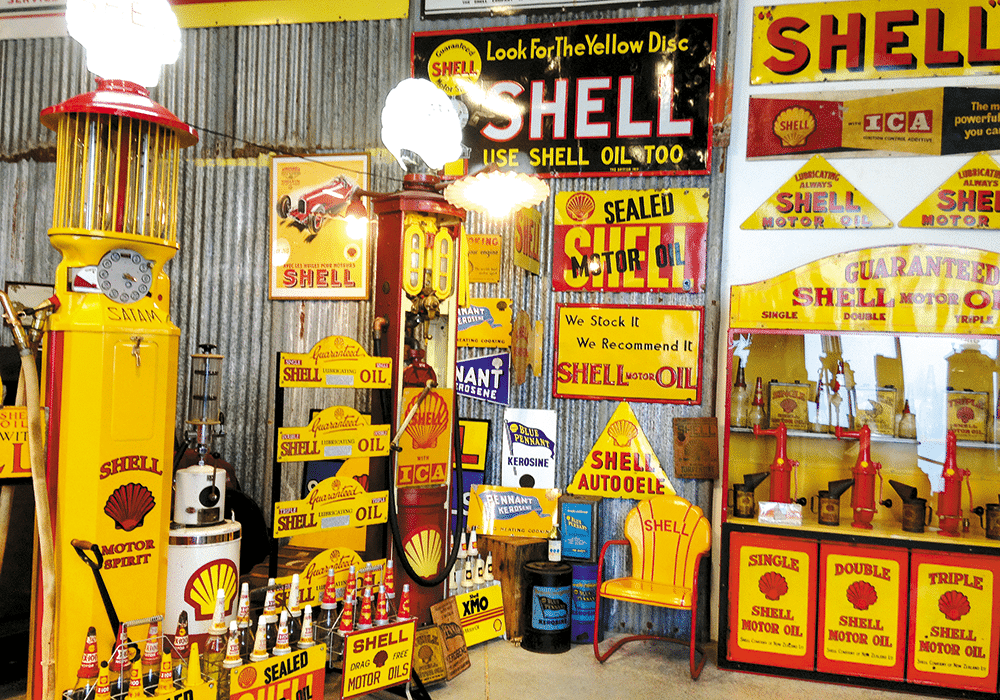
The 1915 Excelsior motorbike and sidecar, with its insubstantial-looking fabric roof, must have given lots of unforgettable times. The surrounding scarlet Texaco petrol pumps, all shapes and sizes, slightly prepared me for the dazzling display of colourful and gleaming cars around the corner. One hundred vehicles are displayed over two levels, backdropped by motoring signage – Shell, BP, Caltex, Firestone, Dunlop … and more classic pumps.
From the 1922 Stutz and 1927 Ford T, to a gangster-looking Packard, square-shaped Fiats, convertibles, and Porsches and Maseratis next to Triumphs and Ford Prefects, there’s bound to be a car that awakens memories. I passed an elderly woman reminiscing about her younger days, when she waved from the back of a vintage open-top, feeling like royalty. A man in his 80s laughed with his mate over motorcycle recollections. A Morris Minor reminded me of my Mum; I’d forgotten about choke knobs and infant car-seats – a metal frame with a seat. One is hooked over a front passenger seat.
My favourite was the 1959 Messerschmitt, a bluish-green, narrow, three-wheeled car with a clear, bubble roof. A model wearing a fur hat ‘drives’, her cardboard suitcase strapped on the back carry rack.
An hour and a half whizzed as we browsed the collection, which included motorcycles – the early ones just bikes with motors. There were Vespas, pedal cars, model cars, a collection of bonnet emblems, and a replica service station typical of those found in New Zealand between 1910 and 1950.

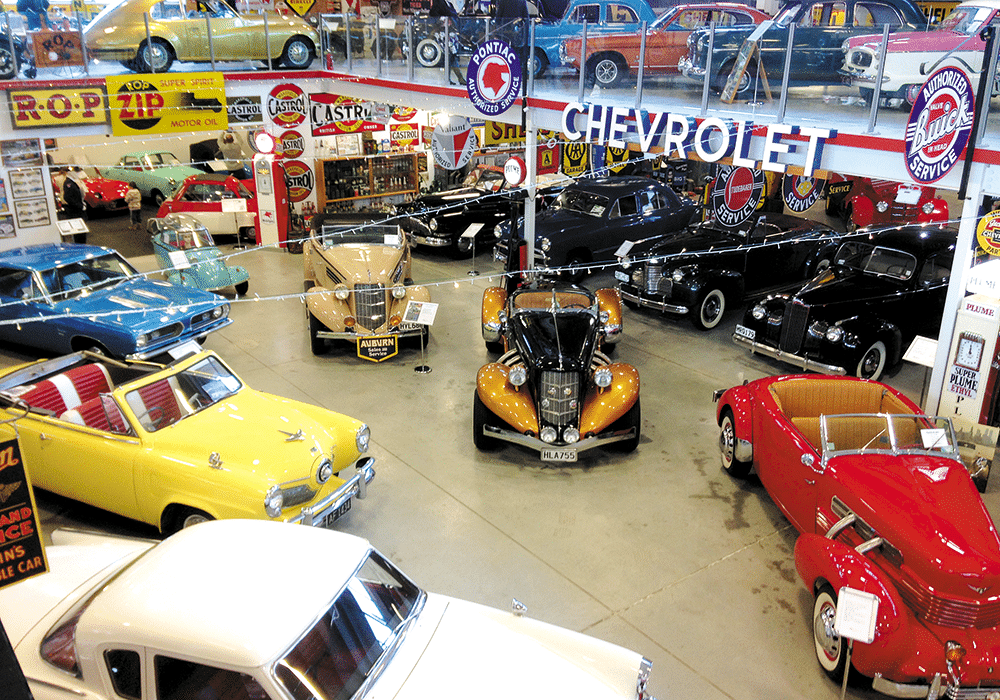
Sculpture Park, Waitakaruru Arboretum
About 25km from the museum, in the green Waikato countryside, the Sculpture Park at Waitakaruru Arboretum is worth at least a two-hour visit. Once a quarry, it’s been transformed over 20 years from gorse-covered land into a 17.5-hectare park, and is home to 20,000 trees from around the world. We came across the owner, John Wakeling, who informed us that this year they will have planted 1000 plants by the end of August.
White tiles at the base of trees indicate numbered descriptions in the tree guide available. Blue tiles correspond to sculptures listed on a separate sheet. Following the arrows on a 2km trail, we attempted to spot the over 100 artworks. It was like a treasure hunt. Some blended into the surroundings, others were vibrant. The giant knitting needles with a ‘knitted’ square hanging above the rock garden where succulents grow, and a black metal cross entwined with bronze-ish metal flowers on a hill were favourites.
As it was winter, camellia and bromeliads – with a few random, confused daffodils – added a colourful splash to this Garden of Significance, recognised by the New Zealand Garden Trust. We walked along tracks through native forest – the beating wings of wood pigeons breaking the silence – and beside shrub-lined roadways, and found idyllic ponds. The quarry pond was particularly picturesque; nestled below bush-shrouded rock cliffs, a sculptured woman sits waist-deep in a pond. Where pine forest once stood, we looked out over the surrounding area, a patchwork of green, serene paddocks; two distant ranges jutted up.
An onsite café is open at weekends and public holidays, but closed in June, July and August.
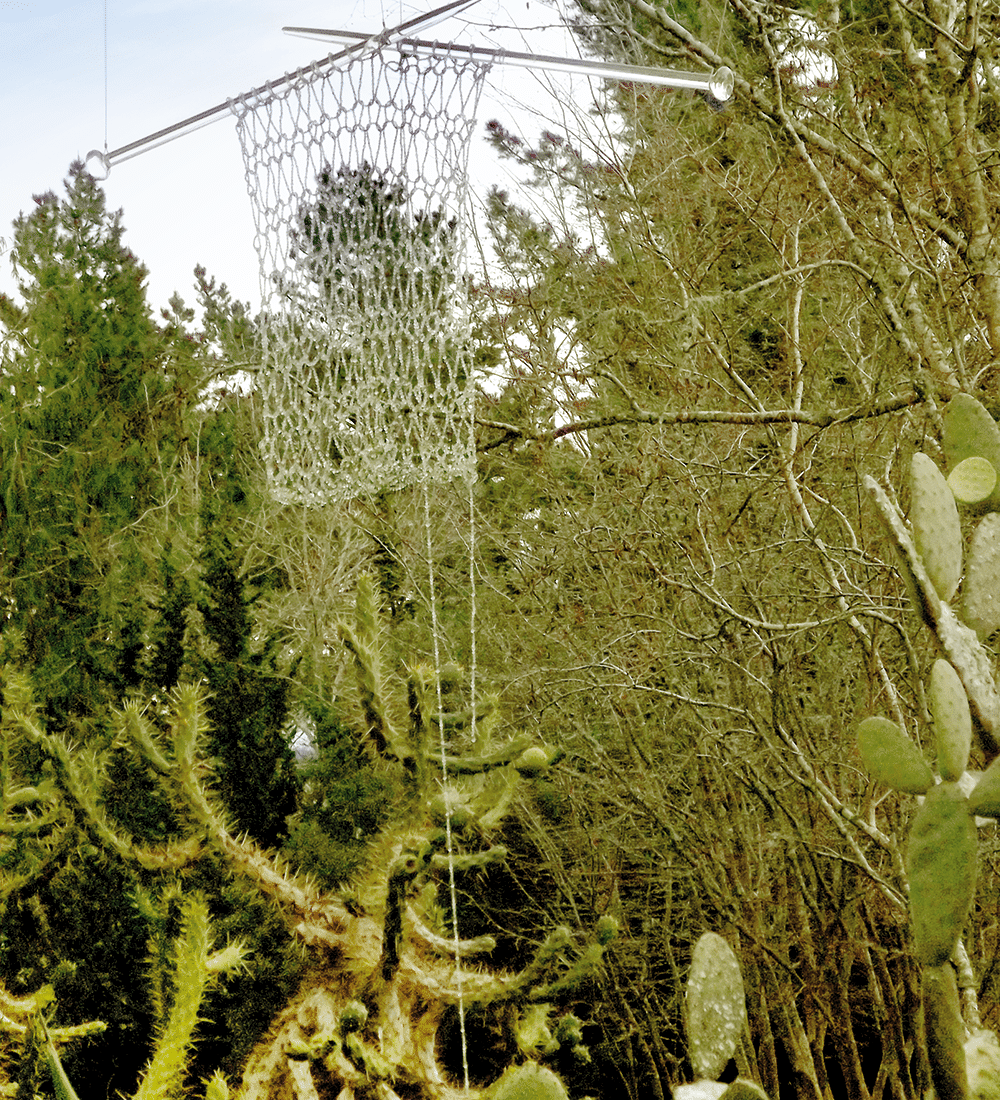
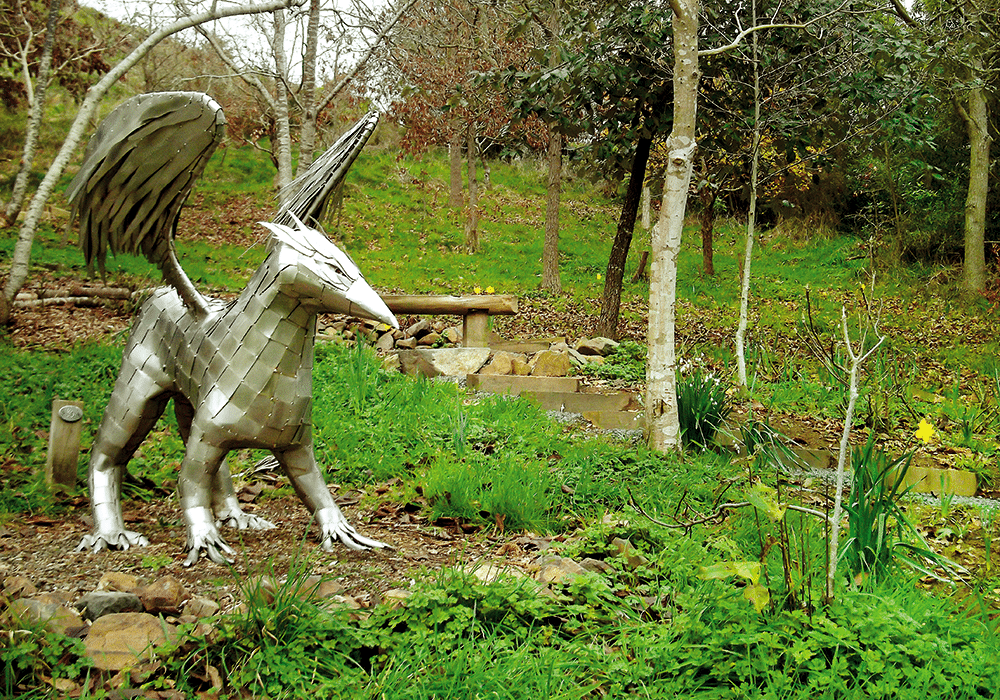
Glow-worm kayaking
From Cambridge, we headed to the Lake District Adventures base for night kayaking on Lake Karapiro. It was July and 5°C, but kitted out with woollen socks, dive boots, jackets and over-trousers, we were warm. With a quick lesson on paddling techniques we were off by 4pm in a double kayak, our guide Caleb alongside.
On still Waikato waters, we paddled upriver, passing over where a Māori village once stood. Most of its buildings were dismantled before the area was flooded – just a wooden beam poking above the surface marks where it once stood. Railway lines and stairs descend into the murky river at the site of the three-storey Horahora Power Station, submerged in 1947 when Lake Karapiro was formed. Its roof removed, divers apparently explore it, and it’s said that one of the turbines still spins. Green bird-nest boxes on poles in the water, branches adorning them, are meant to attract warblers.
Swinging left, we kayaked up Pokaiwhenua Stream, which narrowed through a dim gorge about a kayak-length wide. Water dripped down high rock sides coated in moss and ferns. The coo of wood pigeons echoed. We took a short break at a grassy flat area and snacked while darkness descended, learning that a glow-worm is in fact glowing maggot poo.
Back on water, the current carried us along behind Caleb, the reflecting tape on his paddle the only indication of where he was. With only the occasional dip of the paddles required to keep to the middle of the narrow sliver of night above us, we mostly avoided gentle collisions with the gorge banks. Clusters of glow-worms shone on either side, galaxy-brilliant; others were random pin-pricks, like the lights of remote rural homes. A morepork broke the silence.
Emerging from the stream, we found the crescent moon reflected in the motionless river, along with sporadic lights from homes; the Milky Way illuminated the dark sky. We disturbed swans as we paddled past, and 2¾ hours after starting out, the magical 5.2km journey was over.
These not-so-well-known sights were Waikato ‘wows’… and with still more to explore, I’ll be back.
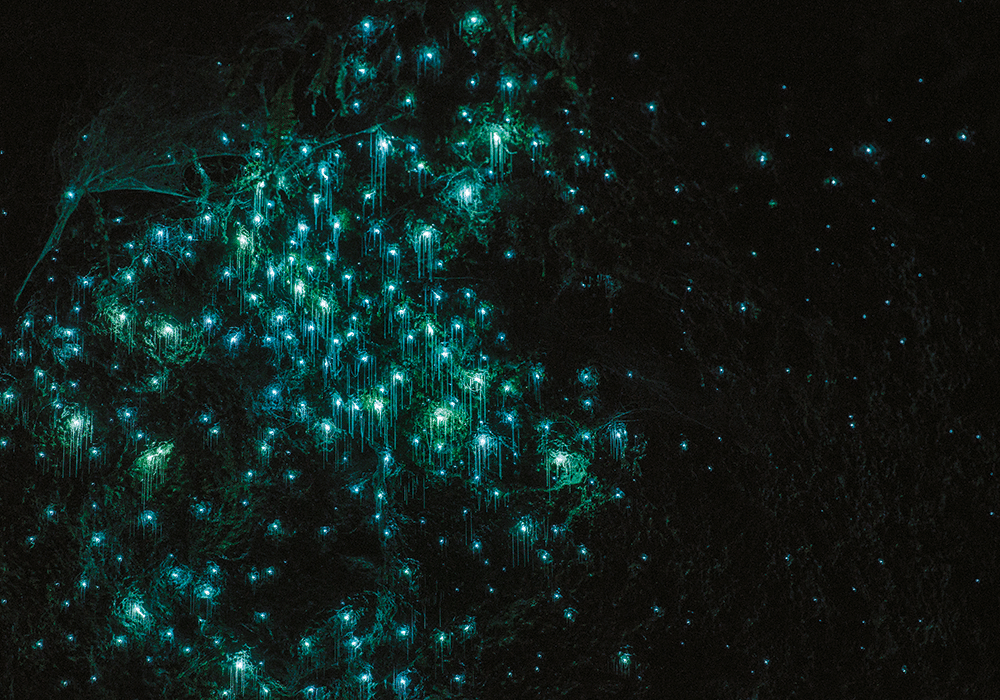
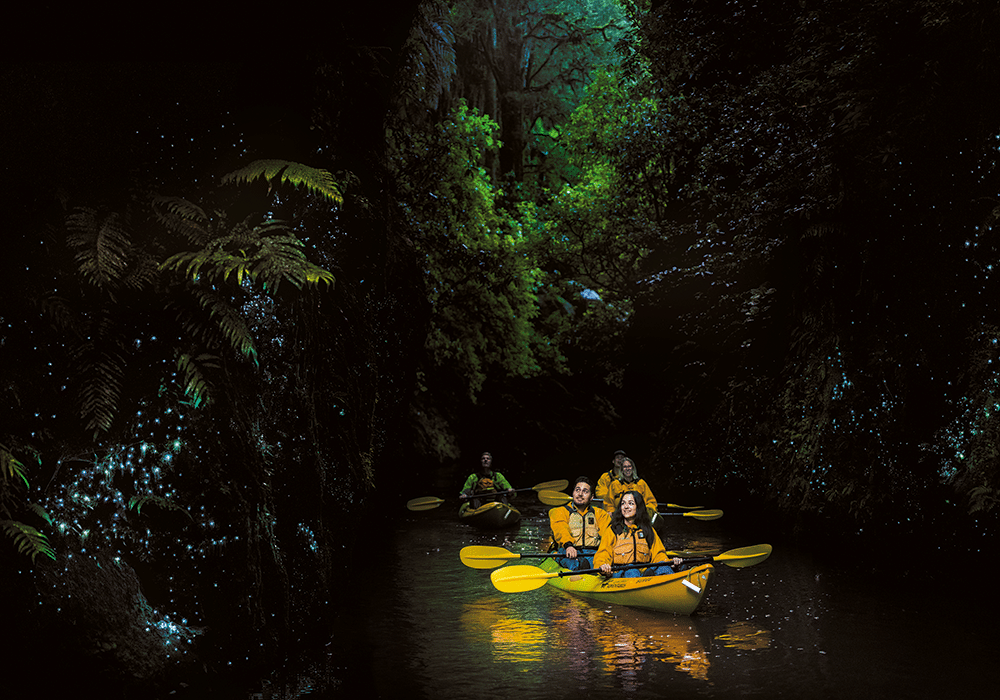
More Information
Sculpturepark.co.nz: book online for guided
and self-guided tours
For self-contained camping near each location,
see: nzmca.co.nz

